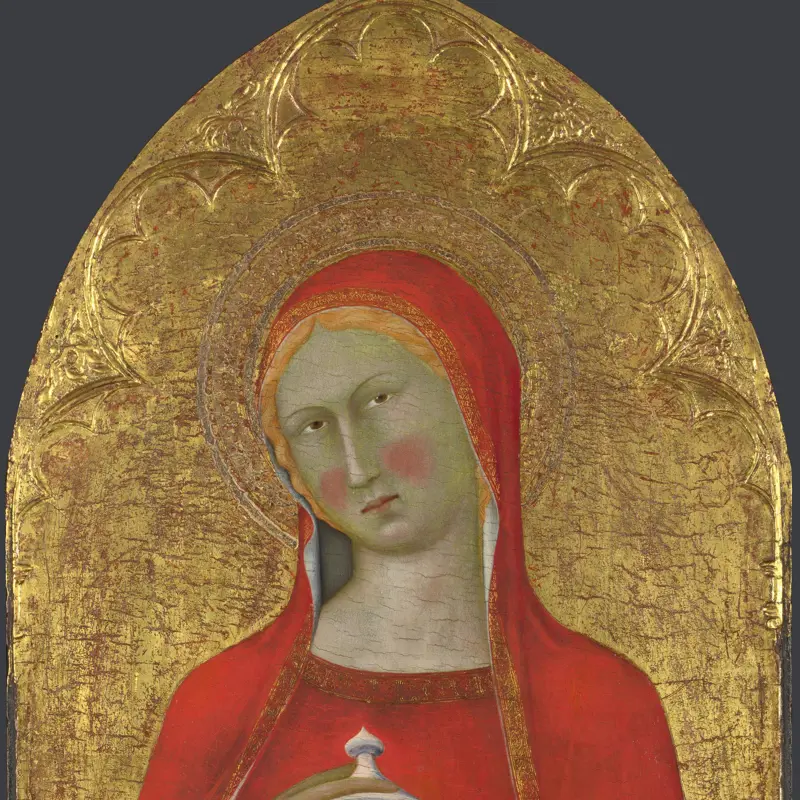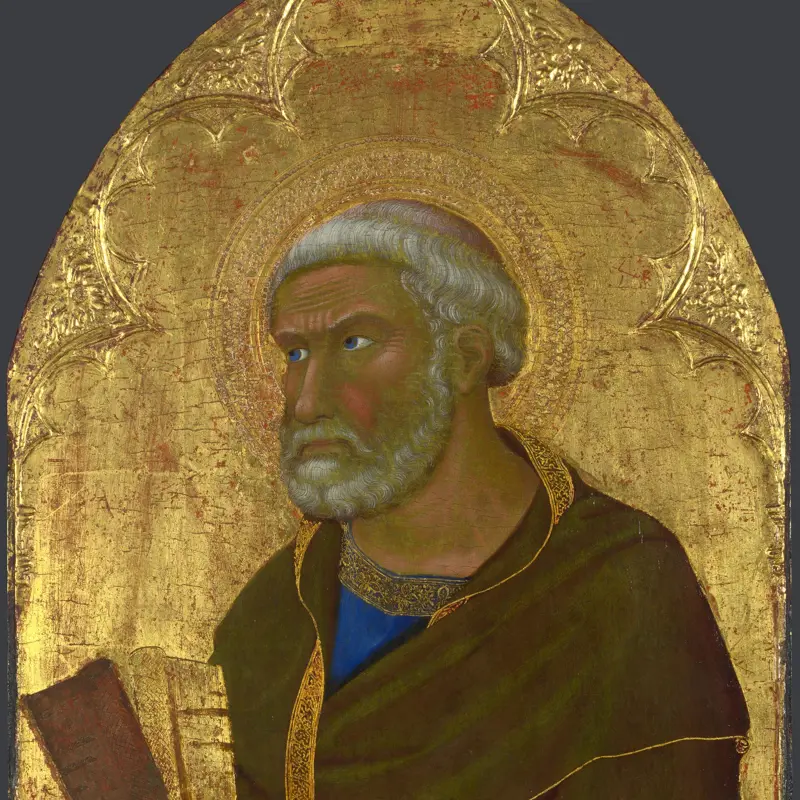Master of the Palazzo Venezia Madonna, 'Saint Peter', about 1350 (?)
About the work
Overview
This is Saint Peter, one of Christ’s apostles, who was entrusted with the keys to the kingdom of heaven (Matthew 16: 19). The panel was once part of the main tier of an altarpiece – there’s burn damage to the right of the book, probably caused by a candle placed on the altar below.
Different techniques help to create a three-dimensional effect: incised curved lines and cross-hatching makes the shaft of each key seem rounded, while the crossed end of the silver key is painted with black and white to give a sense of depth to the indentations. The saint’s striking blue eyes are painted with the expensive pigment ultramarine, as has his tunic.
Key facts
Details
- Full title
- Saint Peter
- Artist dates
- active mid-14th century
- Part of the series
- Master of Palazzo Venezia Altarpiece Panels
- Date made
- about 1350 (?)
- Medium and support
- egg tempera on wood
- Dimensions
- 60.1 × 34.5 cm
- Acquisition credit
- Presented by the Misses Cumming in memory of their father, Charles D. Cumming, 1930
- Inventory number
- NG4492
- Location
- Not on display
- Collection
- Main Collection
Provenance
Additional information
Text extracted from the ‘Provenance’ section of the catalogue entry in Dillian Gordon, ‘National Gallery Catalogues: The Italian Paintings before 1400’, London 2011; for further information, see the full catalogue entry.
Bibliography
-
1951Davies, Martin, National Gallery Catalogues: The Earlier Italian Schools, London 1951
-
1986Davies, Martin, National Gallery Catalogues: The Earlier Italian Schools, revised edn, London 1986
-
1988Gordon, Dillian, National Gallery Catalogues: The Early Italian Schools before 1400, revised edn, London 1988
-
2001
C. Baker and T. Henry, The National Gallery: Complete Illustrated Catalogue, London 2001
-
2011Gordon, Dillian, National Gallery Catalogues: The Italian Paintings before 1400, London 2011
About this record
If you know more about this work or have spotted an error, please contact us. Please note that exhibition histories are listed from 2009 onwards. Bibliographies may not be complete; more comprehensive information is available in the National Gallery Library.
Images
About the series: Master of Palazzo Venezia Altarpiece Panels

Overview
These panels, which show Saints Mary Magdalene and Peter, were once part of the main tier of an altarpiece. The central image was of the Virgin and Child (now in the Palazzo Barberini, Rome) and two images of saints appeared on individual panels on either side.
Our two paintings were both to the right of the image of the Virgin, with Saint Peter probably closest to it. Another showing Saint Paul (now in a private collection) was probably situated directly to the left of the central image. Our panels were at one stage converted into rectangles – the current arched tops are modern additions, attached before the panels entered our collection to restore them to their original shape.
Silver has been detected on the back of the panels in other collections. We don't know the altarpiece’s original location, but if it did have a silver back then it’s likely that it was not designed to be placed against a wall.


